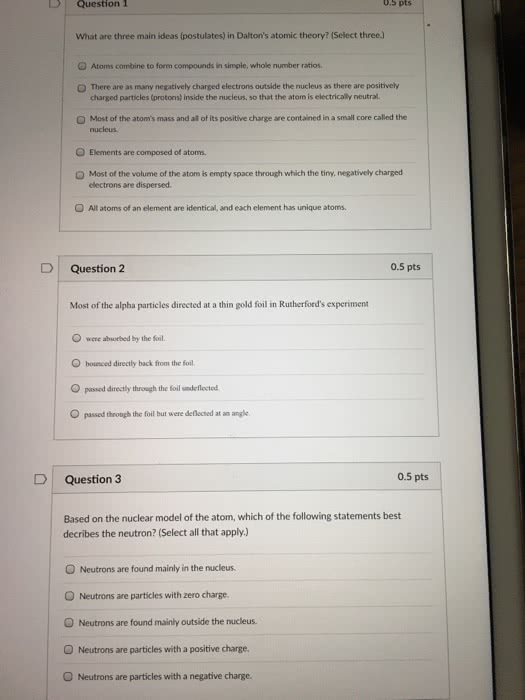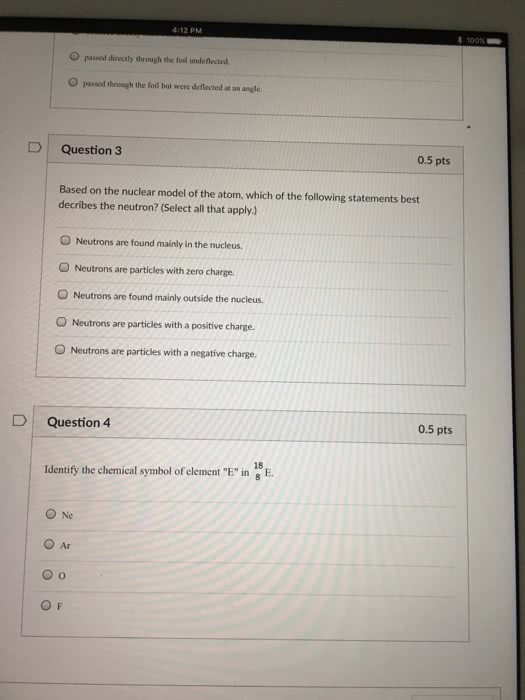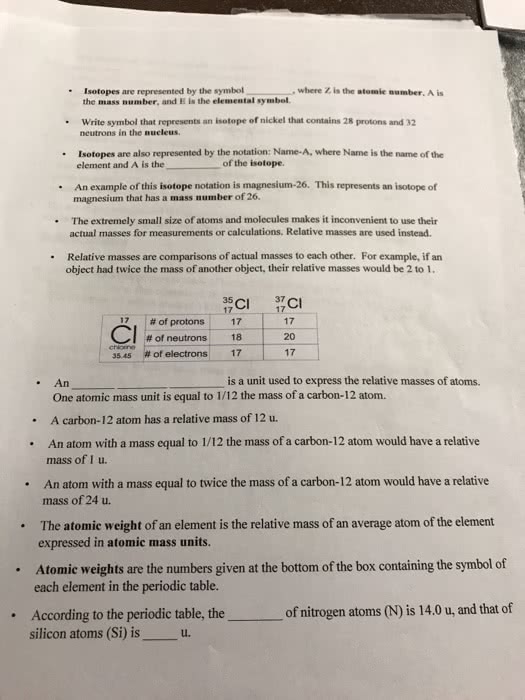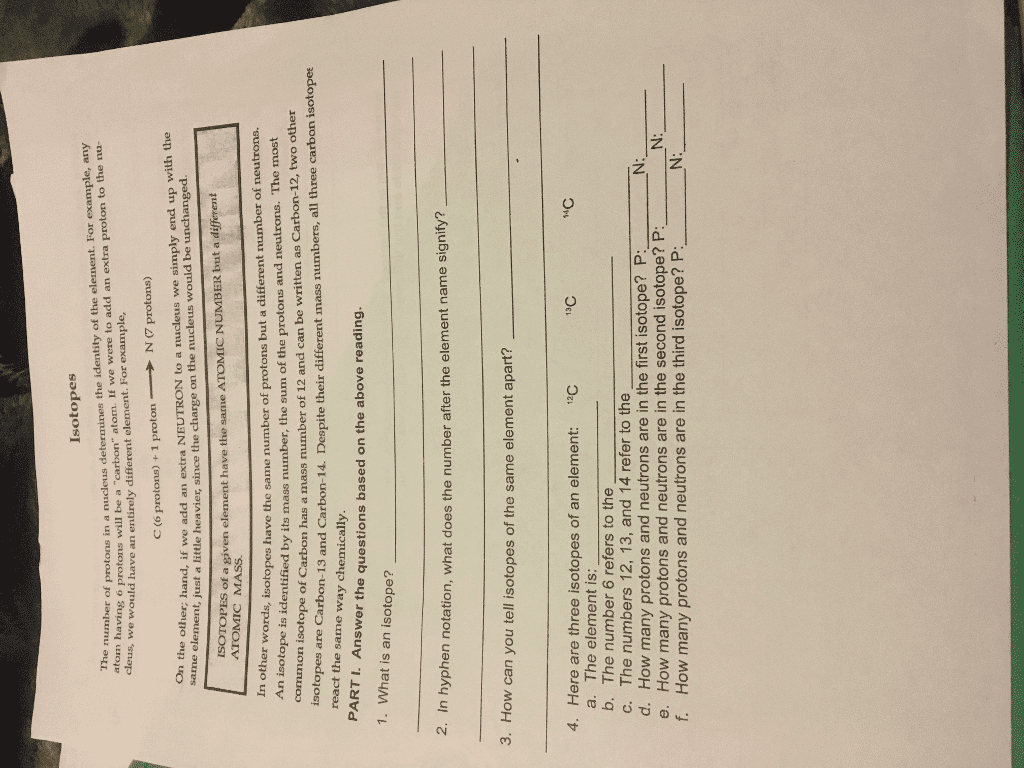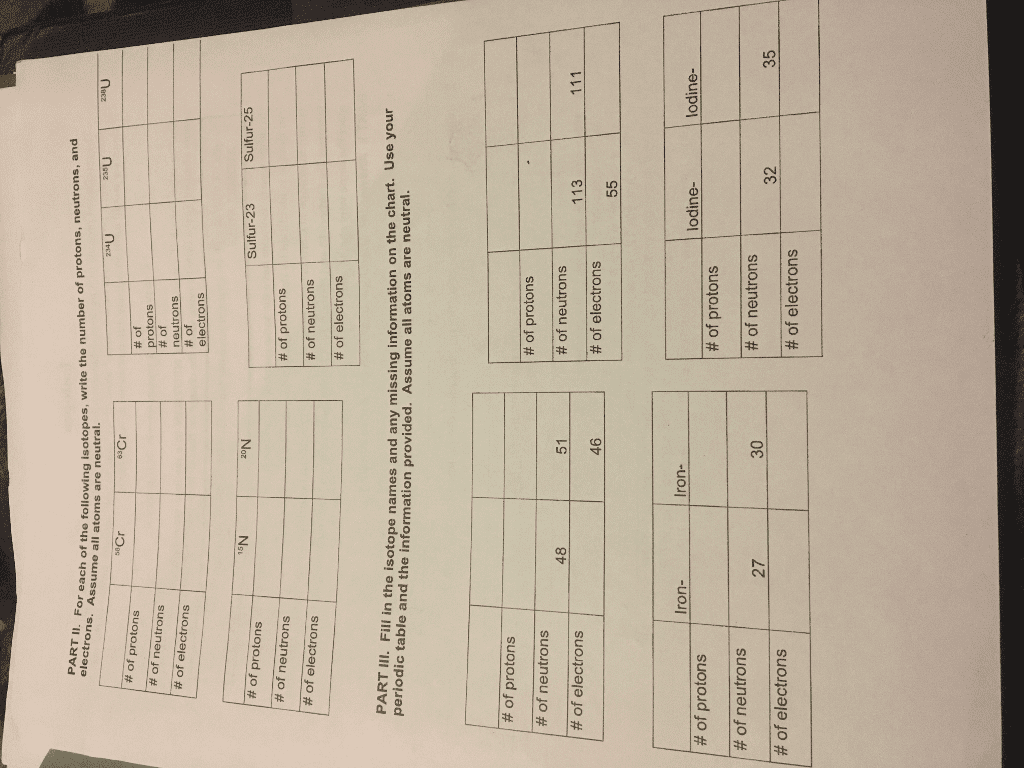CHEM1011 Lecture Notes - Lecture 7: Barium Chloride, Royal Aircraft Factory F.E.2, Aluminium Sulfate

TOPIC 7.
CHEMICAL CALCULATIONS I - atomic and formula weights.
Atomic structure revisited.
In Topic 2, atoms were described as ranging from the simplest atom, H, containing a
single proton and usually no neutrons in its nucleus with one electron orbiting outside
that nucleus, through to very large atoms such as uranium for example which contains
92 protons and even more neutrons in its nucleus. The point was also made that the
mass of the atom is almost entirely located in its nucleus, being attributable to protons
and neutrons, while the mass of electrons is negligible.
Amount in chemistry.
Basic principle: atoms form compounds by combining in simple numerical ratios
but not in simple mass ratios.
Because the masses of atoms of different elements are different, in quantitative
calculations it is not possible to say, for example, that if one atom of element A reacts
with one atom of element B, then 1 gram of A reacts exactly with 1 gram of B. Thus
while atoms do actually combine in simple integer ratios (like 1:1 in NaCl or 2:1 in
H2O), they do not combine in simple mass ratios. In the example of NaCl, the
actual ratio by mass of Na : Cl in this compound is 22.99 g : 35.45 g. How can this
ratio be deduced? To calculate the amounts of substances that are needed to react
exactly with a given amount of other substances, a method of counting in chemistry is
essential. Because a single atom or molecule is such a small amount of material, we
need a more appropriate way of measuring amount than counting atoms or molecules.
To illustrate this need by analogy, consider our method of counting money. Use of
cents as the basic unit of amount of money would be limited to only very cheap
purchases - indeed the smallest coin now in use is the 5 cent piece. Instead, most of
our transactions are in units of amount of dollars which is the basic unit used in most
cases. The cent is just too small an amount to be the base unit of money. As another
example, when our government engineered the change to metric units for weights and
measures, they decreed the unit of length to be the millimetre. The result is very large
numbers appear on drawn plans and in specifications. The latter is a good example of
how the unit selected as the base unit can be too small to be convenient. Similarly, as
atoms and molecules individually are exceedingly small, a very large number of atoms
or molecules of elements or compounds is required as the basic unit of amount.
Atomic masses.
The mass of a single atom of hydrogen, 1H, is 1.66 × 10–24 g while the mass of a single
atom of the most common isotope of uranium, 238U, is 3.95 × 10–22 g. These masses
VII - 1
find more resources at oneclass.com
find more resources at oneclass.com

VII - 2
are not obtained by weighing any individual H or U atoms but are deduced from the
mass of a very large number of these atoms. In calculations, these very small numbers
are inconvenient and, in any case, they refer to invisibly small amounts of materials.
Instead, rather than the actual masses of atoms, a scale of RELATIVE ATOMIC
MASSES is used. The most obvious way to set up a scale of relative atomic masses is
to adopt the mass of the lightest atom, 1H, as exactly 1 and express the masses of all
other atoms relative to the 1H atom. Using this basis, the relative atomic mass of a
uranium atom, 238U, would be
mass of 1 238U atom = 3.95 × 10–22 g = 238 = 238
mass of 1 1H atom 1.66 × 10–24 g 1
Comparing these two atoms,
Thus a single 238U atom is 238 times heavier than a single 1H atom. Similarly, the
relative atomic masses or weights of atoms of all elements can be obtained and
tabulated. Note that this number has no units as it is a ratio only.
As another example, consider a helium atom containing 2 protons + 2 neutrons. If one
makes the approximation that a proton has the same mass as a neutron, it could be
predicted that the relative atomic mass of helium would be 4. Similarly, carbon atoms
with 6 protons and 6 neutrons would have a relative atomic mass = 12. On this basis,
the relative atomic weights of the most common isotopes of the first 6 elements would
be H = 1, He = 4, Li = 7, Be = 9, B = 11, C = 12.
find more resources at oneclass.com
find more resources at oneclass.com

VII - 3
However, the tables of relative atomic masses, called ATOMIC WEIGHTS or
ATOMIC MASSES for short, (the terms “mass” and “weight” are typically used
interchangeably in this topic) apply to the weighted average for all isotopes for each
element as it occurs in nature, not to just the most common isotope of the element.
Most elements occur naturally as two or more isotopes, and therefore their relative
atomic weights are not always integer quantities. [See the box below.]
CALCULATION OF THE AVERAGE ATOMIC WEIGHT OF SILVER
from isotopic abundance ratios.
The element silver, Ag, atomic number = 47, occurs naturally as only two isotopes:
107Ag (abundance = 51.84 %) and 109Ag (abundance = 48.16 %).
The weighted average of the relative atomic masses of these two isotopes is
calculated as follows:
Weighted average = isotopic mass 1 × fractional abundance 1
+ isotopic mass 2 × fractional abundance 2
= 107.0 × 0.5184 + 109.0 × 0.4816
= 55.46 + 52.49
= 107.9
In this calculation, the isotopic masses have been taken as 107.0 and 109.0 on the
basis of the number of protons + neutrons present in each isotope, and taking the
mass of a proton and a neutron as being identical. A more precise calculation and
using the unit of atomic weight scale to be 1/12 the mass of a 12C atom would give
a value of 107.87 for the relative atomic weight of silver.
For various reasons, the basis taken for the atomic weight scale has been changed a
number of times over the past century. The currently used basis is to define the unit of
atomic weight scales as 1/12 of the mass of the atom of the carbon isotope with 6
protons and 6 neutrons in its nucleus, 12C. The values which result for atomic weights
of the elements using this basis are almost the same as that obtained by taking the
atomic weight of hydrogen as 1. The following table lists the (relative) atomic weights
to 1 decimal place for the first 20 elements.
Element:: H He Li Be B C N O F Ne
Atomic mass: 1.0 4.0 6.9 9.0 10.8 12.0 14.0 16.0 19.0 20.2
Element:Na Mg Al Si P S Cl Ar
Atomic mass: 23.0 24.3 27.0 28.1 31.0 32.1 35.5 40.0
find more resources at oneclass.com
find more resources at oneclass.com
Document Summary
Chemical calculations i - atomic and formula weights. 92 protons and even more neutrons in its nucleus. The point was also made that the mass of the atom is almost entirely located in its nucleus, being attributable to protons and neutrons, while the mass of electrons is negligible. Basic principle: atoms form compounds by combining in simple numerical ratios but not in simple mass ratios. Thus while atoms do actually combine in simple integer ratios (like 1:1 in nacl or 2:1 in. H2o), they do not combine in simple mass ratios. To calculate the amounts of substances that are needed to react exactly with a given amount of other substances, a method of counting in chemistry is essential. Because a single atom or molecule is such a small amount of material, we need a more appropriate way of measuring amount than counting atoms or molecules. To illustrate this need by analogy, consider our method of counting money.


